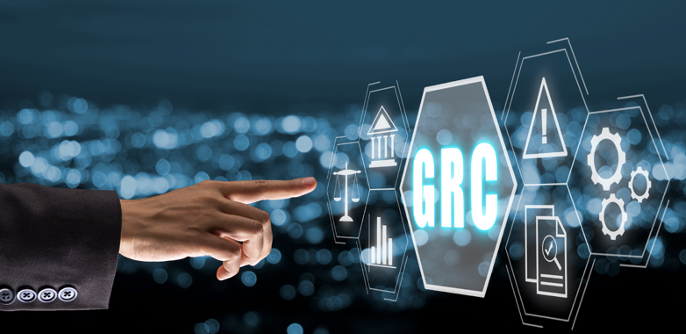
Managing risk is a critical part of running any organization, regardless of its size or industry. In today’s fast-paced, compliance-driven world, businesses need structured, efficient ways to stay ahead of potential threats while maintaining operational excellence. Governance, Risk, and Compliance (GRC) systems are designed to help organizations identify, assess, and mitigate risks effectively. While GRC solutions can vary, the underlying principles they implement provide a robust framework for safeguarding businesses.
Here are effective ways GRC processes enhance risk management:
One of the most significant advantages of GRC methodologies is the centralization of risk-related information. Rather than dealing with fragmented data across various teams and tools, GRC practices consolidate everything into a single framework. With grand.io facilitating this process, decision-makers gain access to real-time insights, making risk assessments more accurate and informed.
Visibility is the cornerstone of effective risk management. By integrating risk data from multiple departments, GRC frameworks make it easier to understand where vulnerabilities exist. Whether it’s operational risks, compliance risks, or cybersecurity threats, having clear visibility ensures proactive decision-making.
Staying compliant with industry regulations and standards is crucial for any business. GRC methodologies simplify this process by aligning organizational goals with regulatory requirements. This not only minimizes the risk of non-compliance but also reduces associated fines and reputational damage.
Traditional risk assessments can be time-consuming and prone to errors. GRC systems employ standardized frameworks to streamline these assessments. Automated workflows and predefined templates enhance consistency, minimize human error, and streamline the risk evaluation process.
Risk management isn’t confined to a single department. It requires input from IT, finance, HR, and other areas. GRC systems break down silos and foster collaboration by creating a unified platform for communication. This holistic approach ensures risks are addressed from every angle.
Effective risk management relies on timely information. GRC tools often feature real-time dashboards and reporting capabilities that allow stakeholders to monitor risks as they emerge. This level of transparency not only keeps everyone informed but also supports swift, data-driven responses.
Consistency is key when managing risks across an organization. GRC frameworks help standardize policies, procedures, and controls, ensuring every department adheres to the same guidelines. This not only reduces confusion but also strengthens the organization’s overall risk posture.
Manually monitoring risks can be labor-intensive and inefficient. GRC systems leverage automation to continuously monitor potential threats. This includes tracking regulatory changes, identifying anomalies, and flagging issues before they escalate. Automation saves time while ensuring no critical risks slip through the cracks.
Despite the best preventive measures, incidents can and do happen. GRC strategies are essential in managing incident response by defining clear protocols and responsibilities. From identifying the source of the issue to implementing corrective actions, a structured GRC approach minimizes damage and prevents recurrence.
Risk management shouldn’t be an afterthought; it should be an integral part of strategic planning. GRC systems help organizations embed risk considerations into their long-term goals and decision-making processes. This ensures that risks are identified and addressed early, reducing their impact on business objectives.
Audits are an inevitable part of running a business. Whether it’s a financial audit or a regulatory compliance check, being prepared can save significant time and resources. GRC frameworks ensure that all necessary documentation and evidence are readily available, making the audit process smoother and less stressful.
Business continuity planning is a critical aspect of risk management. GRC frameworks assist in creating and maintaining comprehensive business continuity plans. By identifying critical processes, dependencies, and potential disruptions, GRC methodologies ensure businesses are prepared to recover quickly from unforeseen events.
To truly unlock the potential of GRC frameworks, organizations must:
Adopt a Culture of Risk Awareness: Educate employees about the importance of risk management and their role in maintaining compliance.
Regularly Update Policies and Procedures: Keep your guidelines aligned with the latest regulations and industry standards.
Invest in Employee Training: Equip your team with the skills needed to use GRC processes effectively.
In an era where risks are increasingly complex, businesses can no longer afford to rely on outdated or piecemeal approaches to risk management. By adopting robust GRC practices, organizations can stay ahead of threats, streamline compliance, and ensure long-term success. Whether you’re managing cybersecurity risks, regulatory changes, or operational threats, a well-structured GRC approach provides the clarity, consistency, and control needed to navigate today’s challenging landscape.
1. What is GRC?
A: GRC stands for Governance, Risk, and Compliance. It is a framework that helps organizations manage risk, ensure compliance with regulations, and improve overall governance by centralizing data and standardizing processes.
2. How does GRC improve risk management?
A: GRC improves risk management by providing tools for centralizing risk data, increasing visibility, automating monitoring, and standardizing policies. This enables organizations to address risks proactively and effectively.
3. Can GRC help small businesses?
A: Yes, GRC principles are scalable and can be tailored to meet the needs of small businesses. By streamlining processes and ensuring compliance, GRC enables small businesses to manage risks effectively.
4. Does GRC help with strategic planning?
A: Absolutely. GRC integrates risk management into strategic planning, allowing organizations to identify potential risks early and align their long-term goals accordingly.
5. What role does employee training play in GRC success?
A: Employee training is essential for the successful implementation of GRC practices. It ensures that all team members understand their roles in managing risks and maintaining compliance.
6. How does GRC assist with audits?
A: GRC frameworks streamline the audit process by maintaining centralized documentation and ensuring that all necessary evidence is readily available, making audits less time-consuming and stressful.